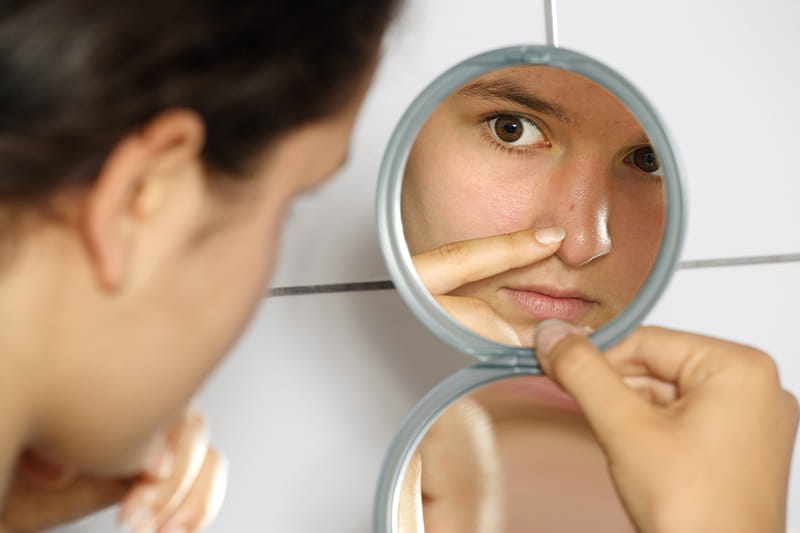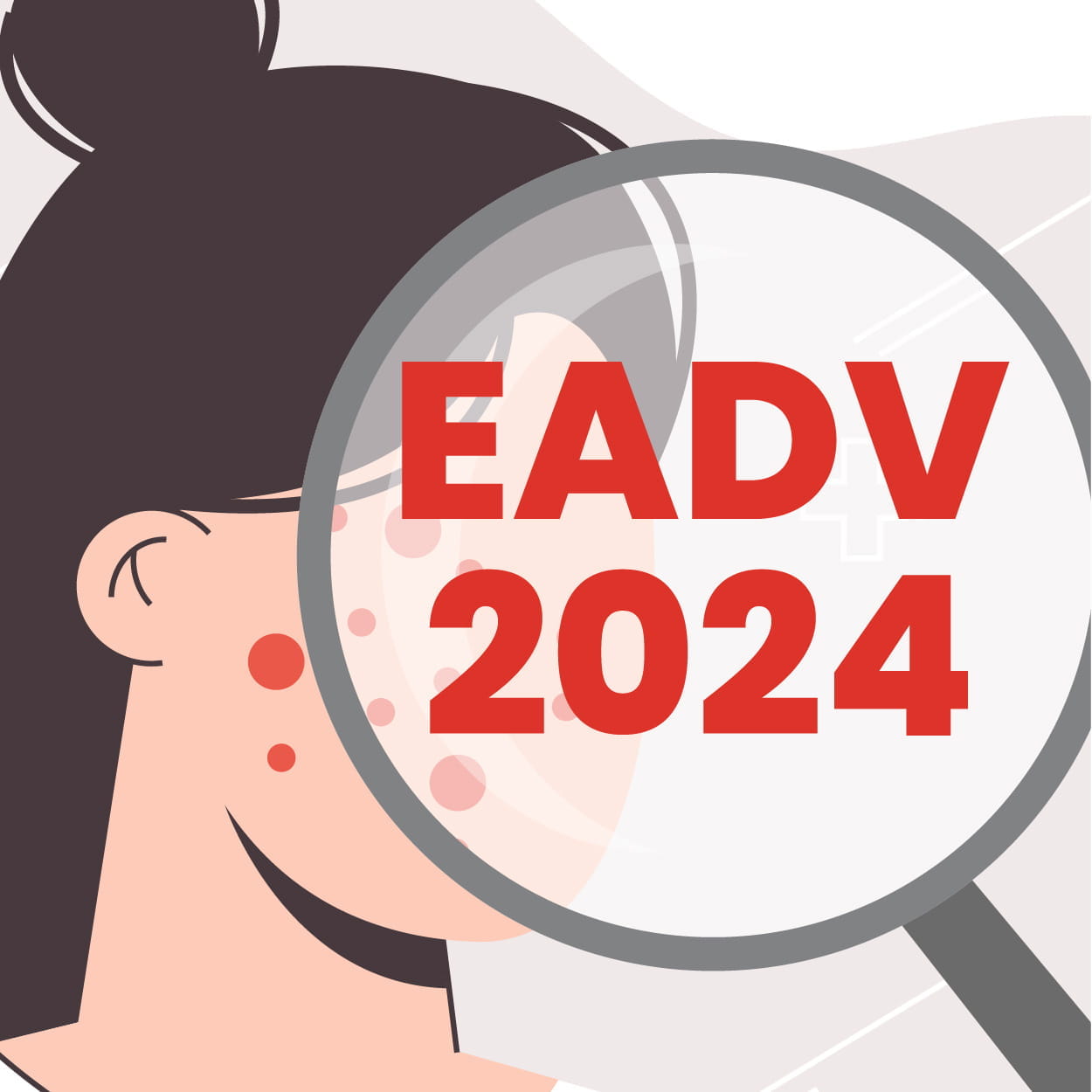EADV 2024: New Acne Guidelines
Speaker- Alison Layton (United Kingdom)
The National Institute for Health and Care Excellence (NICE) guidelines were published in June 2021, following the standard process for guideline development. A single review protocol was developed to identify randomized controlled trials (RCTs). The evidence synthesis followed the standard approach of identifying and selecting relevant information, which was graded based on the severity of acne. Additionally, the guidelines incorporated a network meta-analysis to support decision-making and included health economic analysis. The network meta-analysis evaluated the efficacy of different treatment classes for individuals with mild to moderate acne. The analysis provided an overview of the comparisons between different treatment types. Based on the findings, relative treatment efficacy across mild to moderate to severe acne for both males and females was ranked. The analysis identified several interventions and treatments and the data used to inform clinical decision-making.
Additionally, health economic analysis was conducted, generating a model that evaluated the costs of treatments alongside their benefits, measured in Quality Adjusted Life Years (QALYs). The horizontal axis represented the impact of treatments on QALYs, while the vertical axis showed associated costs. All treatments were positioned to the right of the dotted line, which indicated the cost-effectiveness threshold set by the NICE at £20,000 per QALY. The analysis provided insight into the cost-effectiveness of the treatments, supporting the guideline recommendations. Based on the findings, five first-line therapies were recommended. These included fixed combination products such as adapalene, benzoyl peroxide (BPO), tretinoin, clindamycin, and a combination of clindamycin and BPO. The first two treatments showed efficacy for mild, moderate, and severe acne, while clindamycin was effective for mild to moderate cases. The remaining two treatments consisted of topical combination products combined with tetracycline antibiotics, specifically lymecycline or doxycycline, recommended as second-generation tetracyclines for use alongside these topical products. The guidelines also recommended using trimethoprim or a macrolide in cases where tetracyclines were not tolerated. Additionally, if none of the five first-line treatments were suitable, patients could be treated with topical BPO alone.
A key consideration in the guidelines is the reduction of antibiotic usage, with the NICE advising against using antibiotics for longer than six months, except in exceptional circumstances. It poses a challenge in terms of managing patients beyond six months. The guidelines emphasized regular patient reviews at three and six months, focusing on minimizing prolonged antibiotic use whenever possible. For maintenance therapy, the recommended treatment was a fixed combination product of adapalene and BPO. If this combination was not tolerated, monotherapies also demonstrated efficacy in maintenance. It was also important to assess which patients required maintenance therapy, as not all patients would benefit. Prognostic risk factors indicating a potential relapse included early-onset acne, the presence of mid-facial comedones in childhood, truncal acne, and patients with underlying endocrinopathies. These factors were highlighted to guide the decision on maintenance therapy.
The literature did not provide highly detailed or informative guidance regarding skincare advice. It highlights the need for further study on dermocosmetics and evidence generation. It is well established that acne is associated with skin barrier dysfunction, and incorporating skincare products alongside treatments enhances treatment adherence and may also improve acne outcomes. The general skincare recommendations included using non-alkaline, skin pH-neutral, or slightly acidic products, advising non-comedogenic products, and avoiding makeup with comedogenic properties. Additionally, patients were advised to avoid skin trauma. The evidence supporting diet's influence on acne was weak regarding dietary advice, as noted in the NICE guidelines. Patients were referred to the National Health Service (NHS) in the United Kingdom's (UK) "Eat Well Guide" for general nutritional advice.
Several good practice points were included in the guidelines, such as considering acne's impact on quality of life and mental health, with appropriate signposting for psychological support when necessary. For patients with diabetes, irritant topical treatments were advised to be used cautiously, possibly as short-contact therapy or on alternate days. Advice was also provided regarding patients of childbearing potential, particularly avoiding retinoids during pregnancy.
Although the evidence for the efficacy of combined oral contraceptives in treating acne was limited in the NICE guidelines, it was recommended that if a contraceptive was needed, a combined oral contraceptive was preferred over a progestogen-only pill. Regarding hormonal treatments, the NICE guidelines found very limited evidence to support their use. Spironolactone, a common treatment option, was not specifically commented on, though it may be discussed further in other contexts. For patients with polycystic ovary syndrome (PCOS), no significant benefit from hormonal treatments was identified. The guidelines encouraged the use of the five first-line therapies already highlighted, especially for patients with signs of hyperandrogenism and systemic symptoms related to PCOS. In such cases, referral to specialists for further management was advised. Device-based and light therapies were also explored, with photodynamic therapy being the only option recommended by NICE. The treatment was suggested for patients over 18 with moderate to severe acne who had not responded to other treatments.
The issue of acne sequelae, particularly scarring, was not extensively addressed in the guidelines, likely due to limited medical treatments. The recommendations were quite general, focusing on assessing the impact of scarring, avoiding skin trauma, and targeting inflammation early to reduce the risk of scarring. There is evidence linking the duration of acne to the likelihood of scarring, making early intervention critical for those at higher risk. For patients experiencing persistent scarring 12 months after acne resolution, NICE suggested the possibility of treatments like CO2 laser therapy, punch elevation procedures, and glycolic acid peels based on the available evidence. Furthermore, the NICE guidelines identified several unmet study needs in acne treatment. One of the notable gaps is in optimal dosing for isotretinoin, a common acne medication. To address this, a study group in Nottingham has secured funding from the National Institute for Health and Care Study (NIHR) to conduct a dosing study, which is expected to yield valuable insights into isotretinoin treatment strategies.
The American Academy of Dermatology (AAD) guidelines took a similar approach to NICE's development process. A working group, which included patient representatives, was established to identify relevant topics that would inform the evidence synthesis. The recommendations were then graded according to established guideline development and evaluation criteria. The findings regarding topical therapies were largely consistent with those of the NICE guidelines, emphasizing the importance of using a combination of treatments to target the pathophysiology of acne effectively. A notable practice statement recommended that clinicians should aim to utilize various topical therapies together for optimal results. Regarding oral antibiotics, the AAD guidelines introduced sarecycline, a new antibiotic option, and recommended it alongside doxycycline over minocycline due to concerns about the latter's potential severe adverse effects. The guidelines also highlighted the significant risks associated with trimethoprim, particularly the reports of serious reactions such as Stevens-Johnson syndrome and toxic epidermal necrolysis (TEN).
Additionally, the AAD included specific practice statements not found in the NICE guidelines, such as the recommendation to use intralesional steroids for larger inflammatory nodules. They suggested that oral isotretinoin should be considered for patients who do not respond to other treatments, regardless of the severity of their acne. It contrasts with the current UK regulations regarding isotretinoin, which restrict its use primarily to severe cases unresponsive to conventional therapies, including topical and oral antibiotics. While NICE guidelines still reference cumulative dosing, there is a growing consensus that treatment should be tailored based on patient response and adverse effects rather than adhering strictly to cumulative dose protocols. The evidence suggests that a more individualized approach to isotretinoin treatment may be beneficial, reflecting evolving practices in acne management. The AAD guidelines do not mention cumulative dosing for isotretinoin, marking a shift towards patient-centered treatment strategies, unlike the NICE guidelines.
AAD guidelines also introduce conditional recommendations not found in NICE, including topical agents like salicylic acid and azelaic acid, the newer antibiotic sarecycline, and the topical antiandrogen clascoterone. Clascoterone, though unavailable in the UK, has shown effectiveness in reducing sebum production and has received conditional recommendations based on evidence from two randomized controlled trials, influenced by its cost. Additionally, hormonal therapies such as combined oral contraceptives and spironolactone are included, acknowledging the hormonal aspects of acne treatment and the importance of comprehensive, economically conscious management strategies.
Sarecycline, a novel tetracycline antibiotic with a narrow spectrum, is posited to have a lower risk of developing antimicrobial resistance. While it is given based on weight, its recommendation in the AAD guidelines is conditional due to cost considerations. In contrast to the NICE guidelines, the AAD recommends combined oral contraceptives for younger patients, acknowledging their potential benefits in managing acne through their estrogenic effects. A UK study has shown spironolactone's efficacy compared to doxycycline, though further discussion is forthcoming.
The AAD guidelines also recommend eliminating the need for routine monitoring of full blood counts in isotretinoin patients and suggest that electrolytes and potassium levels should only be monitored in older patients or those with comorbidities. Importantly, the guidelines lack evidence supporting dietary changes, alternative therapies, or procedures for acne treatment. These guidelines provide robust recommendations and highlight areas requiring further study to enhance patient outcomes.
The efficacy of subsistence treatments for acne scarring, has been discussed, but there is a lack of robust clinical trial data to support these practices in guidelines. Many practitioners report positive outcomes in clinical settings. Yet, the absence of well-designed randomized controlled trials limits the strength of these recommendations, highlighting a gap in the evidence base that necessitates further study to evaluate and compare the effectiveness of physical procedures like subcision and other device-based therapies. Regarding topical retinoids during pregnancy, caution persists due to historical studies suggesting potential risks associated with topical tretinoin. It leads to a prevailing belief that these agents should be avoided during pregnancy planning. While absorption levels may not substantiate high risk, regulatory guidelines continue to recommend avoidance, although variations exist, such as the over-the-counter availability of adapalene in the United States. Concerning tattoos during isotretinoin therapy, previous recommendations advised waiting six months due to concerns about skin fragility and impaired healing; however, recent studies indicate that physical therapies, including tattoos, may not pose significant risks during treatment. Clinically, most patients tolerate such procedures well, even at higher doses of isotretinoin, though caution remains prudent, especially for those with pre-existing skin conditions. While there is consensus on the effectiveness of certain treatments for acne and its sequelae, further study is essential to strengthen the evidence base and refine guidelines.
33, European Academy of Dermatology And Venereology Congress, 25-28 September 2024, Amsterdam



